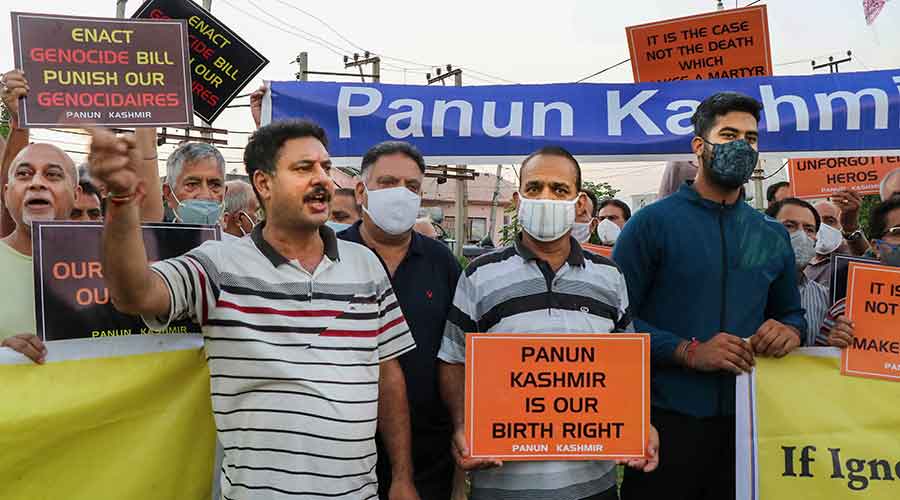Is the spectre of militancy returning to haunt Kashmir Valley, once again? The recent spurt in killings of civilians has raised this chilling prospect. As many as seven civilians have fallen victim to terror attacks in the last few days; the figure has touched 28 this year. Among them are a pharmacist — he was a Kashmiri Pandit — educators as well as a food vendor. The targeted killings seem to be suggestive of a shift in the strategy of militants, with identity being the preferred motive of the bloodshed. What is pertinent is that those martyred belonged predominantly to such minority communities as Sikhs and Hindus. This is a calculated strike on the part of the nation’s adversaries at the very heart of pluralism and accommodation. The strain on kashmiriyat — an indigenous tradition of harmony and syncretism — is all the more unfortunate given the growing alienation between the Valley and the nation. The blame for that cannot be laid on non-State actors alone. The rhetoric of integration — the former state of Jammu and Kashmir was bifurcated by the Bharatiya Janata Party-led Central government in the name of assimilation — and normalcy disseminated by the powers that be has been dismantled by the violence. While it is true that heavy military presence in the wake of the abrogation of Article 370 prevented major terror attacks, the unilateral nature of the abrogation of Article 370 as well as the sustained anti-Muslim narrative of recent times have soured the public mood in the Valley. There is a possibility that militants are keen on exploiting this disenchantment by targeting minorities in the Valley in the hope of unleashing retributive retaliation against Muslims in other parts of the country. The resultant vicious cycle can threaten inclusiveness in Kashmir and India. This must be resisted with a robust political response.
The security apparatus, too, must be nimble in the face of the changing nature of the challenges. Many of these attacks, it is believed, have been carried out by faceless cadre, making it difficult to identify the perpetrators. There has also been an influx of firearms, say defence sources. While these issues need to be dealt with firmly, care should be taken that the response — whether administrative or military — is not disproportionate to the scale of the threat. The way to win the battle against militancy is through the heart of the people of Kashmir. Unfortunately, the Narendra Modi government’s ‘overtures’ have done nothing to alleviate the festering, subterranean, collective resentment.










